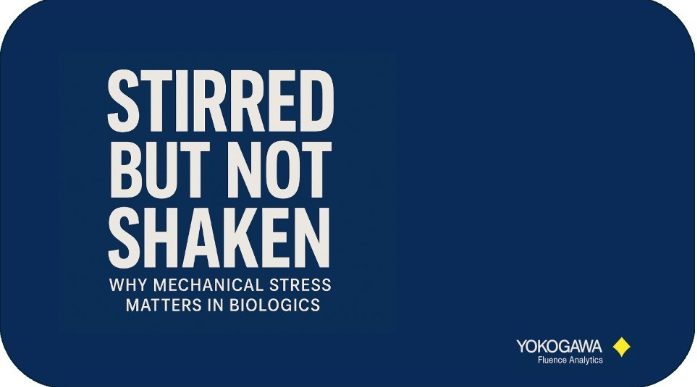Mechanical Stress with ARGEN: Why it Matters in Biologics
In the world of biologics, subtle forces can have serious consequences.
You probably already spend a lot of time thinking about temperature, pH, ionic strength, and the usual suspects in your formulation work. But there’s another factor—one that’s often underestimated—that plays a critical role in how your drug product behaves from bench to bedside. This blog post will explain how biopharmaceutical R&D teams can monitor mechanical stress with ARGEN.
Mechanical Stress with ARGEN
We’re talking about the kind of stress your biologic encounters during real-world processes like mixing, pumping, filtration, transport, and filling. These seemingly routine steps can induce shear forces that quietly unfold proteins, promote aggregation, or destabilize the product—long before it ever reaches a patient.
Let’s dig into why this matters and what you can do about it.
The Impacts of Stirring Stress
At a fundamental level, biologics—especially larger, complex molecules like monoclonal antibodies—are sensitive to mechanical forces that can destabilize their structure. When you stir or pump a solution, you’re applying shear stress. The magnitude of that stress depends on how fast you’re stirring, the viscosity of the solution, and the geometry of the mixing environment.
Even mild shear forces can be enough to partially unfold proteins. Once that structure is disrupted, hydrophobic regions that were previously buried can become exposed. These “sticky” spots start to interact with one another, forming dimers, trimers, or even larger aggregates.
And here’s the tricky part: mechanical stress is hard to model accurately in traditional stability assays. Most tests are done statically—in vials or well plates—without any mixing. That means you’re missing a critical piece of the stability puzzle.
Why This Matters in Real Life
Let’s say you’ve developed a promising formulation that looks great under standard conditions. But once you scale up and run it through a pump, or agitate it slightly during cold storage shipping, it begins to show signs of instability and aggregation.
The result? You’re back to the drawing board.
In the worst-case scenario, these mechanical stability issues aren’t even caught until clinical batches are produced—costing you months of rework, material loss, and credibility with stakeholders.
This is why mechanical stress testing needs to be baked into your formulation strategy from day one.
Testing for Stirring-Induced Instability
So how do you test this without building a custom rig for every sample?
That’s been the bottleneck for many scientists. Traditional tools either don’t allow for controlled mechanical stress, or they require highly manual, time-intensive setups to do so. Which means that for most labs, this type of insight is limited to troubleshooting—not proactive formulation development.
But there are smarter ways to do it.
Where ARGEN Fits In
ARGEN was designed with this exact challenge in mind.
Each of its eight sample cells includes an independently controlled stirring mechanism. That means you can simulate the shear stress your formulation will experience during mixing, handling, or transportation—in real time—while monitoring molecular weight changes via static light scattering (SLS).
You get kinetic insights into how your protein is aggregating, and at what point. Not just a snapshot, but a full movie.
What makes this especially powerful is that you can run up to eight conditions in parallel—different buffers, pH values, excipients, or stirring speeds—all in a single experiment. It’s ideal for Design of Experiments (DOE) workflows, where you want to test a wide range of variables quickly and with statistical confidence.
The result? You can identify formulations that stand up to mechanical stress early in development, instead of discovering problems late in the game.
Final Thoughts
It’s easy to overlook the role of mechanical stress when there are so many other parameters to track. But the evidence is clear: what you don’t model, you can’t predict—and what you can’t predict can derail your project.
By taking mechanical stress seriously, and using tools that let you observe its impact in real time, you give your formulation the best possible chance of success—not just on paper, but in the real world.
If you’re already thinking about mechanical stress in your process, you’re ahead of the game. If not, it’s time to start. Reach out to us today to see how you can begin monitoring the impacts of mechanical stress with ARGEN.
Connect with Yokogawa Fluence Analytics Today!


